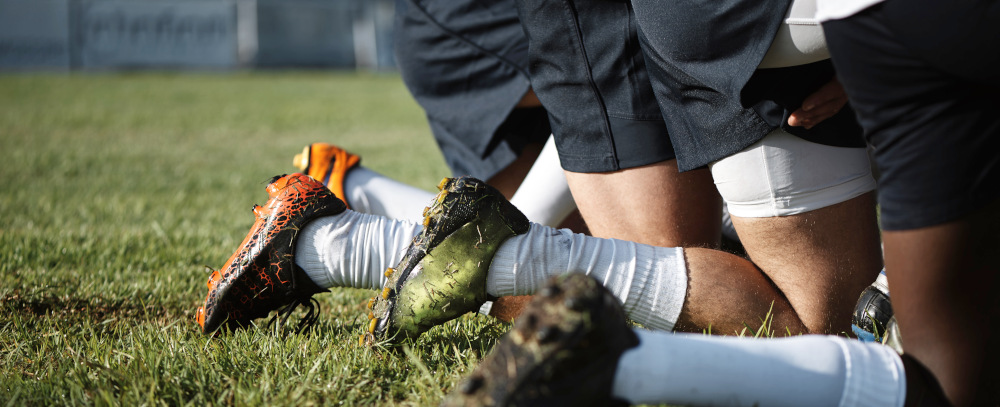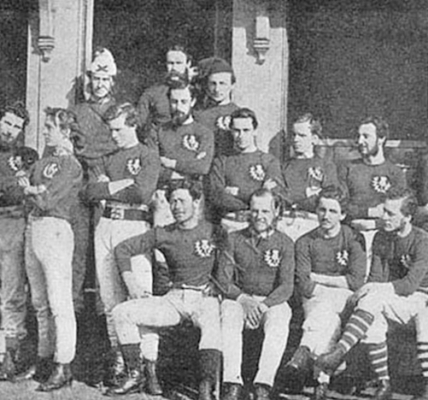In KwaZulu-Natal, rugby isn’t confined to stadiums with polished turf and bright lights. It lives in muddy township lots, school grounds with grass worn thin, and forgotten fields tucked between apartment blocks and taxi ranks. And beneath every forward pack and every try-scoring sprint is a pair of boots , some brand new, most not. If you follow the path of those boots, you’ll find a story that runs deeper than the game itself. A story about hustle, community, resilience, and making something out of almost nothing.
Ask around at any township rugby ground, and someone will show you boots with duct tape holding the seams together or studs filed down to keep from slipping on rain-soaked clay. These aren’t just old kit, they’re relics that have seen as many matches as the players wearing them. In places like Umlazi, Inanda, and KwaMashu, boots are currency, a symbol of both status and survival. Not everyone can afford a shiny new pair, but everyone wants to step onto the field ready to play.
The local second-hand sports gear trade is as much a part of rugby as the scrum itself. Markets in Durban or Warwick Junction hum with stalls where used boots dangle like ornaments. Some come in from charity shops, others from players who’ve upgraded or retired. You’ll find faded Springbok-green laces knotted beside cracked soles and stitched-up tears. But despite the wear, each pair still has value. One boot might pass through the hands of four or five different players before finally being retired.
For many kids, that first pair of rugby boots doesn’t come in a neat box from a sports store. It’s handed down from an older cousin or scored after months of saving up lunch money. There’s an almost ceremonial feel when they finally lace them up for their first match. More than just gear, those boots represent a step into a community , into the unspoken code of team loyalty, discipline, and fierce pride that rugby builds in KZN’s tight-knit spaces.
And there’s creativity in keeping those boots alive. Local mechanics, usually known for fixing car seats or motorbike saddles, double as boot doctors. You’ll see them stitching up torn leather, gluing peeling soles back into place, even replacing studs with improvised metal tacks. There’s a kind of quiet economy built around these small services, often exchanged not for cash but for favours or cold drinks after practice.
The wear and tear tells its own kind of story too. A pair of boots scuffed at the toes means the player’s been driving hard into scrums or working the breakdowns. Frayed laces might signal someone running wing, sprinting until the fabric thins to nothing. Even a missing stud is a clue , it happens often on the rougher fields, where uneven ground can snag gear as easily as it can twist an ankle.
At school tournaments, there’s often as much talk on the sidelines about someone’s boots as there is about the scoreline. Sharp-eyed coaches will swap quiet nods about which player is wearing gear held together by willpower and tape , not as a mark of pity, but as a kind of respect. The kid in patched-up boots is usually the one who doesn’t give up easily, the one with grit.
Some larger clubs and private schools do hold kit drives, gathering used gear and redistributing it to smaller teams. But it’s not a flawless system. There’s always someone left out, always someone hustling for that elusive extra pair. That’s why boots end up passing hands again and again within communities themselves. It’s a kind of grassroots redistribution, built not on policy but on need and shared understanding.
It’s not just schoolboys either. Semi-pro players coming up through the ranks often start in the same way, working their way through discarded gear before signing with clubs that can afford to kit them out properly. There’s a famous story in Durban North about a player who made it to provincial level wearing boots held together with fishing line. Whether it’s true or just a locker room legend doesn’t really matter. What matters is the spirit it captures.
Of course, there’s irony in it too. South Africa’s rugby culture is globally recognised, with big-name sponsors and kit deals worth millions. But that glossy world feels a long way from the township pitches where it all begins. For many young players in KZN, the journey from scrapyard boots to pro-level kit is as much about navigating inequality as it is about talent.
 Yet there’s also pride in that journey. It’s easy to take things for granted when they’re handed to you fresh out the box. It’s something else entirely to run onto the field in boots that have already seen five seasons and still play like it’s your first. There’s a resilience there that feels stitched into the very fabric of rugby in KwaZulu-Natal.
Yet there’s also pride in that journey. It’s easy to take things for granted when they’re handed to you fresh out the box. It’s something else entirely to run onto the field in boots that have already seen five seasons and still play like it’s your first. There’s a resilience there that feels stitched into the very fabric of rugby in KwaZulu-Natal.
Even among spectators, there’s an unspoken recognition. You’ll hear older men on the sidelines sharing quiet jokes about how many times they had to re-tie their laces before a big match, or how many studs they lost before scoring a winning try. It’s part of the shared language of the game, just like knowing which local coach favours quick passes over long kicks.
Walking through a second-hand sports gear market in Durban on any given Saturday, you’ll see boots hanging like flags. Some barely held together, others surprisingly pristine. Each one waiting for its next owner, its next story. In a way, it’s almost like gold , passed hand to hand, carrying history, sweat, and silent hopes from one player to the next.
And maybe that’s why, no matter how digital rugby culture gets, from social media clips to live-streamed matches, the boots will always matter. They’re the link between tradition and ambition, between community and individuality. Between the memory of the last match and the hope for the next one.
So next time you’re at a match in KZN, whether it’s a school tournament in Pietermaritzburg or a Sunday pickup game in Umlazi, take a second to look down at the players’ feet. Behind every kick, every sidestep, every tackle, there’s a story written in scrapes, stitches, and scuffed soles. From scrapyard to scrum, those boots carry more than players , they carry history.




